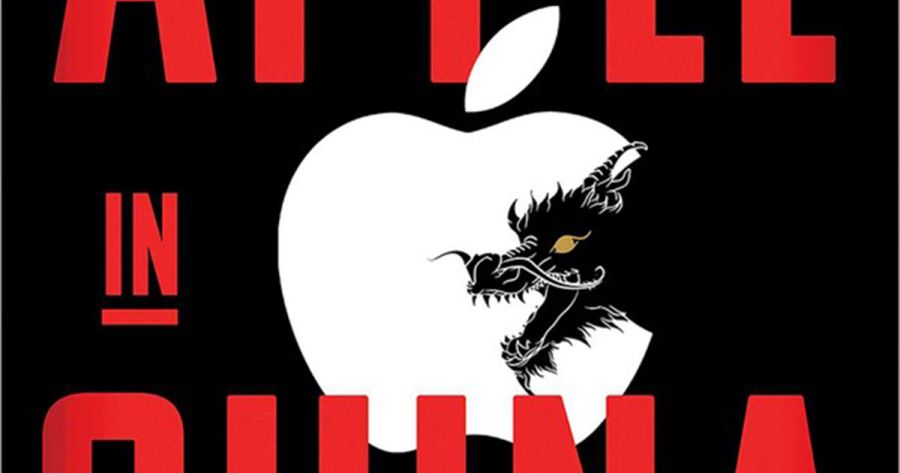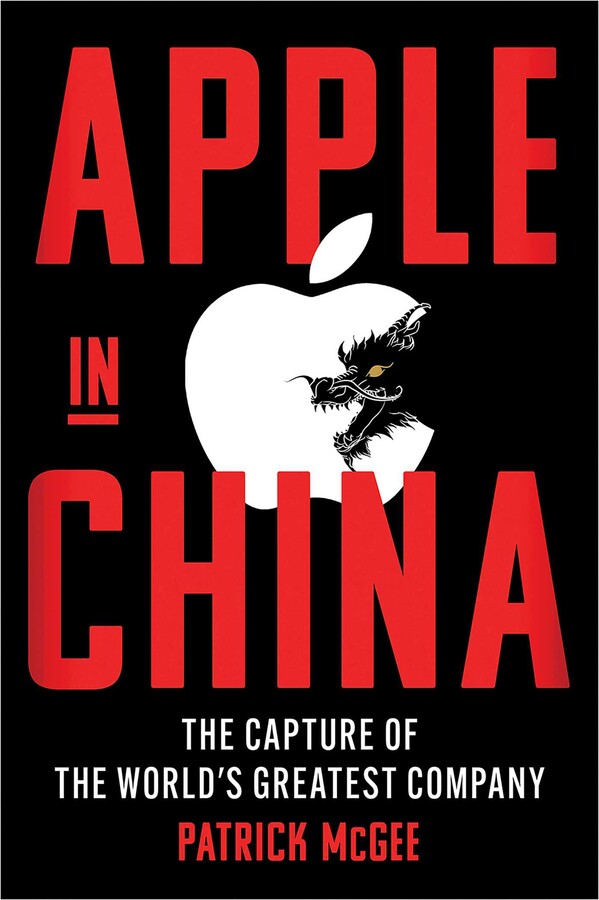
- Free Article: No
- Contents Category: Technology
- Review Article: Yes
- Article Title: The troublemakers
- Article Subtitle: Apple in the world
- Online Only: No
- Custom Highlight Text:
Apple is one of the world’s largest companies. Its market value reached $3 trillion in January 2022, having grown by more than $700 million per day since August 2011 when Tim Cook took over as Chief Executive Officer after an ailing Steve Jobs resigned. Apple began with Jobs and Steve Wozniak ‘tinkering in a garage’. Iconic products followed including the Mac, the iMac, the iPod, the iPad and, most successful of all, the iPhone. An early slogan aimed to align Apple with ‘the crazy ones. The misfits. The rebels. The troublemakers.’ For a company experiencing huge growth, that image was often at odds with the day-to-day commercial reality.
- Book 1 Title: Apple in China
- Book 1 Subtitle: The capture of the world’s greatest company
- Book 1 Biblio: Simon & Schuster, $36.99 pb, 448 pp
- Book 1 Cover Small (400 x 600):

- Book 1 Cover (800 x 1200):

- Book 1 Readings Link: https://www.readings.com.au/product/9781398534377/apple-in-china--patrick-mcgee--2025--9781398534377#rac:jokjjzr6ly9m
Patrick McGee’s timely and important book Apple in China charts this and other tensions, such as the one between Apple’s desire to make its own products and the megatrend of outsourcing. Though McGee focuses on big trends, the greatest delights in this book are at the micro scale of human interactions – in meetings and hotels and on the factory floor, a terrain of fires, thefts, and production mistakes.
‘Make it lickable’ was Jobs’s instruction. Danny Coster led the project to manufacture those transparent, egg-like computers. A surfer, he came up with the iMac’s original Bondi Blue colour. Apple partnered with LG in South Korea to mass produce the iMac. In the out-of-the-way factory town of Gumi, the LG factory was lean in the extreme. McGee explains: ‘Just to save on electricity costs, LG had every other light unplugged. It was small and cramped and the overhead conveyor system carrying the plastic iMac enclosures could hit you in the face if you didn’t duck.’
To get to Gumi, Apple engineers had to take a circuitous three-hour train journey from Seoul. ‘You had to know how to read the schedules and the train numbers, and they were not obvious,’ recalled Apple design engineer Chris Novak. McGee explains that Apple employees found little to do in the city. The Rio Tourist Hotel they stayed in was quaint but grimy – a ‘pigsty’, in the words of one engineer – and it had a designated floor that doubled as a ‘room salon’, or brothel. Engineers said the sheets were so over-starched they likened them to sheet metal.
Cook nevertheless persuaded Jobs on the merits of outsourcing, which was ‘cheaper, faster, nimbler, and most critically of all, could meet Apple’s quality expectations’.
Cook was right, but when Jobs prepared to unveil the iMac to the world the Gumi factory was not production ready. Apple’s own industrial design team had to handcraft the models that Jobs would show on stage. At the May 1998 launch, Jobs removed a black cloth on a tabletop and declared, ‘This is iMac.’ Engineers on the project recall a sense of great relief when the cloth was removed and the iMac was intact, beautiful, and functional. ‘We were scared to death it would melt onstage and we’d all get fired,’ Novak says.
‘It looks like it’s from another planet,’ Jobs said. ‘And a good planet! A planet with better designers.’ Ian Parker of The New Yorker wrote that the iMac’s design ‘had the giddiness of a pardoned prisoner’. In January 1999, Apple replaced Bondi Blue with five Life Saver colours.
McGee also offers fascinating insights into life in China, where Apple has made huge investments while navigating the subtleties and ambiguities of state power. To convey the scale of Apple’s stake in China, McGee compares it to the enormous CHIPS and Science Act of 2022. That investment cost the US government $52 billion over four years – $3 billion less than Apple’s annual investment in China over the preceding decade.
In this way, Apple created millions of Chinese jobs and supported entire supply chains through a huge transfer of ‘tacit knowledge’ – what US Federal Reserve economist Yi Wen defined as the practical know-how involved ‘in the art of making things, in organizing practical matters, and in the way people produce, distribute, travel, communicate, and consume’.
In the era of Xi and Trump, Apple’s China investment has become decidedly fraught. McGee’s main thesis is that Apple has been captured by its symbiosis with China – a situation that is counter to America’s national interest. ‘The iPhone maker’s relationship with China has become politically untenable,’ he claims, ‘yet the business ties are unbreakable.’ In several respects that claim is overstated.
Apple’s Chinese presence repeats a pattern from previous Apple manufacturing in Japan (with firms such as Sony and Sharp), Taiwan, and South Korea. Each of those forays had a friendly start and then a phase in which the contract manufacturer flexed its muscles. Taiwan continues to be uniquely important to Apple. McGee explains that ‘every notable Apple product relies on chips sourced from a single company in Taiwan, TSMC, by far the world’s most advanced chipmaker and the crux of Taipei’s “Silicone Shield” against possible invasion by Beijing.’
When McGee was writing, ninety per cent of Apple production occurred in China, but the company’s footprint in India was ramping up and it was also diversifying into Vietnam. Since that time the impact of Trump-era trade policies has been strongly felt. At an August 2025 meeting with Donald Trump in the Oval Office, Cook presented the president with a golden gift plus a pledge to invest US$100 billion to reshore production to the United States. That commitment was in addition to Apple’s existing plan to invest US$500 billion in the US over the next four years.
McGee’s core claim is somewhat Trumpian: that Apple as an American business should serve America’s national interest. But that claim leaves some important interests out, such as those of workers, customers, other sovereign states, and the overall innovation ecosystem. As a global corporation, Apple has global responsibilities.
Despite the book’s title, much of it is about Apple in general. McGee has produced a history of Apple that is rich, authoritative, and intriguing. While aiming to say something about Apple in China, he has said a lot about Apple in the world.


Comments powered by CComment